A modern layout, contrasts of geometric objects, several proposed in a Y shape that we frequently find in his works, perhaps in memory of the beautiful Yvette who shared the artist's Parisian life?
Beautiful contrasts of shadows and lights, and warm colors for this extraordinary work by the man who was one of the pioneers of Fauvism and Cubism, as Guillaume Apollinaire wrote in 1913.
The work, measuring 27 cm by 35 cm, is presented in a beautiful gilded frame measuring 48.5 cm by 56 cm.
It is in very good condition and is signed at the bottom right.
Auguste Chabaud entered the École des Beaux-Arts in Avignon in 1896 and was taught by Pierre Grivolas.
Then in 1899, he went to Paris to continue his studies at the Académie Julian and the École des Beaux-Arts, in the studio of Fernand Cormon (1845-1924).
He met Henri Matisse and André Derain.
His parents' wine estate suffered the crisis of 1900, forcing Auguste Chabaud to return to the South of France.
In 1901, Auguste Chabaud had to leave Paris to earn a living.
He embarked as a pilot (or pilot) on a ship and discovered the West African coast.
The same year, his father died; he and his brother inherited the vineyard and land, which his brother alone would manage. During this period, Chabaud worked extensively on butcher's paper.
From 1903 to 1906, he did his military service in Tunisia, from where he returned with sketchbooks filled with local images, including numerous drawings of soldiers, natives, and bar scenes populated by girls and sailors.
Back in Paris, Chabaud made his debut in 1907 at the Salon des Indépendants, exhibiting among the Fauves.
He would discover a new life, that of Parisian nightlife and cabarets.
Collectors began to take an interest in his work.
In Montmartre, where he had his studio, he painted the lively or deserted streets and squares, scenes of nightlife, and brothels. In 1911, he began his Cubist period, working in large formats and sculpting.
Numerous exhibitions followed, including the one in New York in 1913, where he exhibited alongside Henri Matisse, André Derain, Maurice de Vlaminck, and Pablo Picasso, then in Chicago and Boston.
His paintings from the Fauvist period depict Parisian nightlife: cabarets, café-theaters, prostitutes, in bright shades (yellow, red) contrasting with the colors of the night (navy blue, black).
Upon his return from the First World War in 1919, Auguste Chabaud settled permanently in Graveson, in the Alpilles.
From 1920, he began his blue period (he used Prussian blue in its pure state) in which Provence, its characters and customs were highlighted.
The South, which he never stopped painting, even in his Parisian period, would henceforth occupy him exclusively.
As Paul Cézanne had done with the Sainte-Victoire mountain, Auguste Chabaud immortalized "the montagnette", painting countryside scenes, peasants walking the hills and paths of the Alpilles.
He remained there until the end of his life, living as a recluse in his house with his wife and seven children.
Nicknamed "the hermit of Graveson", he died in 1955.
Some of his works can be seen in Marseille at the Cantini Museum,
in Paris at the Musée National d'Art Moderne,
at the Musée d'Art Moderne de la Ville de Paris, and in Geneva at the Petit Palais.
In 1992, the PACA regional council opened a museum in his honor in Graveson.
Painters regularly pay tribute to him, such as Claude Viallat in 2003.
Auguste Chabaud wrote poems and books such as: L'Estocade de vérité, Le Tambour Gautier, Je me suis pris pour Démosthène.
Works in public collections
France Toulon, art museum: Villeneuve-lès-Avignon, oil on cardboard, 53 × 76 cm.
Troyes, museum of modern art: La Gare, 1907, oil on canvas, 73 × 100 cm.
Centre National Pompidou Beaubourg
Museum Paris
Hermitage Museum Saint Petersburg
Vatican Museum Rome
Switzerland Geneva, Petit Palais Museum.
































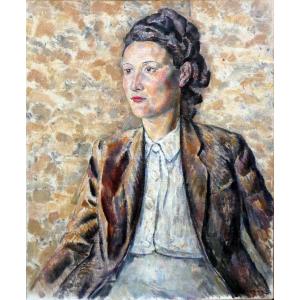
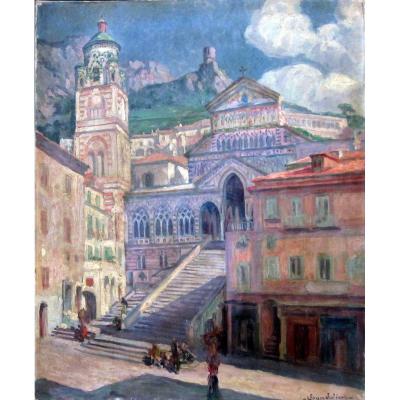
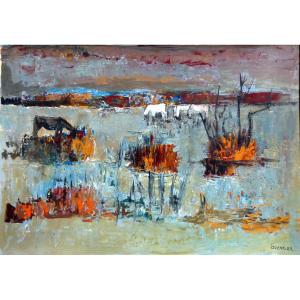
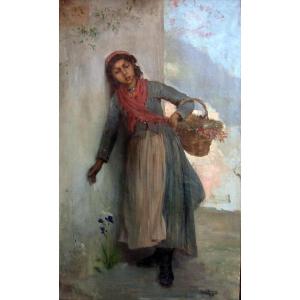

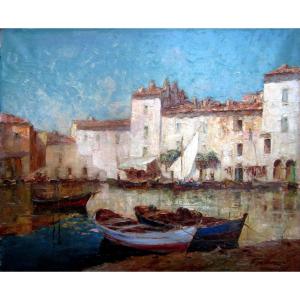











 Le Magazine de PROANTIC
Le Magazine de PROANTIC TRÉSORS Magazine
TRÉSORS Magazine Rivista Artiquariato
Rivista Artiquariato